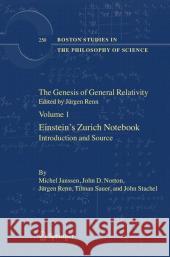The Genesis of General Relativity: Sources and Interpretations » książka
The Genesis of General Relativity: Sources and Interpretations
ISBN-13: 9781402039997 / Angielski / Twarda / 2007 / 2099 str.
The transition from classical to modern physics in the ?rst half of the twentieth c- tury by quantum and relativity theories affected some of the most fundamental notions of physical thinking, such as matter, radiation, space, and time. This tran- tion thus represents a challenge for any attempt to understand the structures of a s- enti?c revolution. The present four-volume work aims at a comprehensive account of the way in which the work of Albert Einstein and his contemporaries changed our understanding of space, time, and gravitation. The conceptual framework of classical nineteenth-century physics had to be fundamentally restructured and reinterpreted in order to arrive at a theory of gravitation compatible with the new notions of space and time established in 1905 by Einstein s special theory of relativity. Whereas the classical theory of gravitation postulated an instantaneous action at a distance, Einstein s new relativistic kinematics rather suggested an analogy between the gravitational ?eld and the electromagnetic ?eld, propagating with a ?nite speed. It is therefore not surprising that Einstein was not alone in addressing the problem of formulating a theory of gravitation that complies with the kinematics of relativity t- ory. The analysis of these alternative approaches, as well as of earlier alternative approaches to gravitation within classical physics, turns out to be crucial for identi- ing the necessities and contingencies in the actual historical development."











